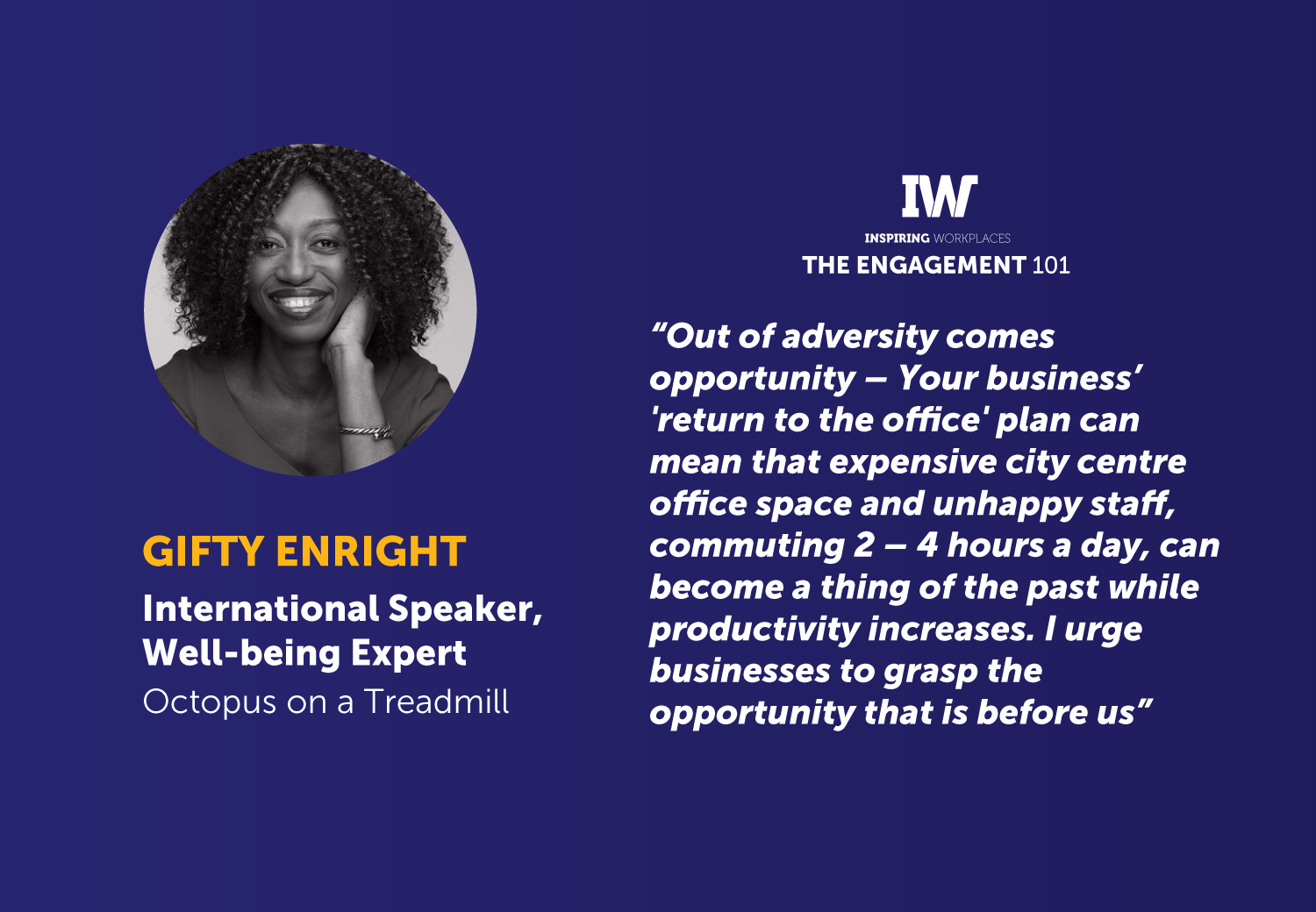
24th May 2021
How to return to the workplace (or not) – in a post covid world – Gifty Enright

This snippet is part of our Ebook How to return to the workplace (or not) – in a post covid world. Advice and suggestions from our Top 101 influencers. You can download the full eBook with all the advice here.
Gifty Enright, International Speaker, Women & Workplace Well-being Expert
Nimble businesses who have learnt lessons from lockdown have a once in a generation opportunity to reduce overheads, increase productivity and increase staff retention. How businesses handle the ‘return to the office’ is vital to this opportunity.
A survey published by PwC in January this year shows 83% of employers and 71% agreeing that the shift to remote working during the pandemic has been overwhelmingly successful. It interesting that the percentage of employees that agree to this shift is less than employers, as historically it has been employers who have been resistant to this shift. This could be because remote working is not ideal for everyone; it depends on where they live and their family circumstances. People with young children with no childcare during the pandemic found working from home stressful, others who live on their own found it isolating.
With the vaccination programme underway and schools open there is an opportunity for choice and change. The question now becomes: How should we return to the office?
The hybrid Model
The hybrid model is where employees get to work from home for some days of the week and come to the office on other days. This meets the employee need for flexibility and less commuting, but also stops people from feeling isolation. The challenge with this model is coming up with an equitable schedule that will suit everyone.
What should employers do?
- Happy staff stay with you and are more productive. The PwC survey showed that over 50% of employees want to work from home 3 days or more a week. Employers need to keep this in mind as they plan for the return. Engage your employees and work to build policies to take account of their concerns.
- Workspaces will need be changed to cope with the health and safety requirements of returning staff, e.g. office density now has to be less than pre-pandemic.
- Employers also need to re-assess their office buildings strategy, as working from home does not necessarily mean less working space due to less density for health and safety; but it might present the opportunity to move to a cheaper location or even split locations. The strategy should also take into account the extra equipment and tools that will be needed support employees to work from home efficiently.
- The function of the office will change from solely being a place of work to more of a place to experience a company’s culture and build relationships. Employers need to ensure employees see their trip to the office as this experience.
- Successful remote working model is dependent on resource scheduling flexibility, equitable and transparent working from home policies and good management training in those policies.
Out of adversity comes opportunity – Your business’ ‘return to the office’ plan can mean that expensive city centre office space and unhappy staff, commuting 2 – 4 hours a day, can become a thing of the past while productivity increases. I urge businesses to grasp the opportunity that is before us.

